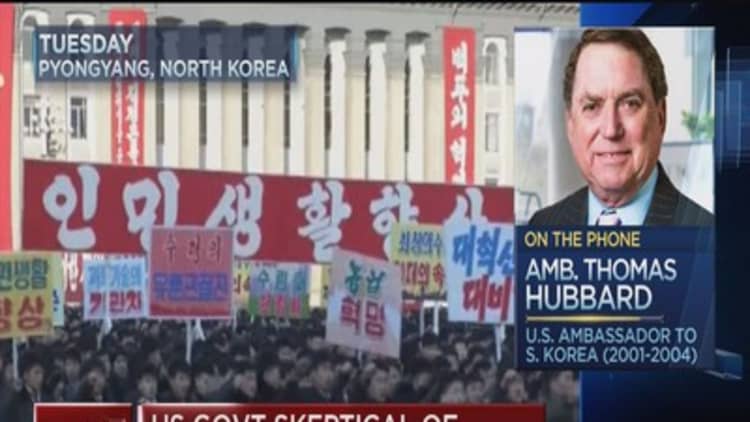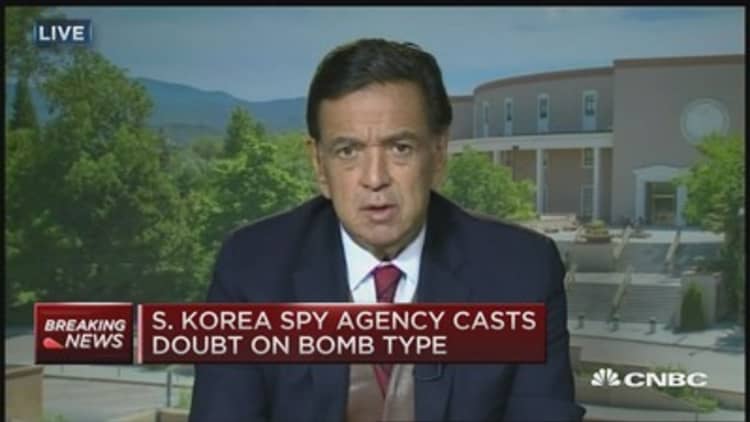


The North Korean government claimed on Wednesday that it successfully completed a test of a hydrogen bomb, but the pariah state's bark may be bigger than the blast, say some seismologists.
A report from the U.S. Geological Survey showed that a magnitude 5.1 earthquake struck near the northeast coast of North Korea about an hour before the government announced the test. That would actually be a magnitude that's comparable to North Korea's previous three tests of more conventional nuclear weapons, the most recent of which was in 2013.
"It does not seem large enough" to be the mark of a true hydrogen bomb detonation, said Paul Richards, a researcher at Columbia University's Lamont-Doherty Earth Observatory, who studies the seismic signals of nuclear weapons test explosions.
"The limited number of (hydrogen bomb tests) that have been done underground in the few megaton range have magnitudes on in the high six or seven range" on the Richter scale, Richards said. "That would be a hundred times larger than this."
Secondly, for a test of a supposedly more powerful device, the seismic signal bears a similarity to those of previous nuclear tests involving smaller devices, said Won-Young Kim, also a research scientist at Columbia University's Lamont-Doherty Earth Observatory who collaborates with Richards.

Kim said a hydrogen bomb cannot be ruled out based on the seismological evidence alone, but said "the consensus is that a hydrogen bomb or thermonuclear device would be huge — the yield would be much bigger than that of a small nuclear bomb."
A fission-based bomb, such as those the United States dropped on the Japanese cities of Hiroshima and Nagasaki at the end of World War II, derives its energy from splitting atoms of uranium or plutonium. Both the Hiroshima and Nagasaki bombs produced somewhere between 10 and 20 kilotons of explosive yield.
A fusion bomb achieves a much more powerful effect by combining atoms — often from hydrogen.
"That type of explosion doesn't cause kilotons [of explosive yield], it causes megatons," said Bruce Bennett, a senior analyst for Rand Corp., a non-partisan think tank.
The magnitude of Wednesday's test was only 0.2 higher than the 4.9 magnitude seismic signal created by the nuclear test in 2013, meaning it was only 1½ times larger.
"So this could have been a fusion test," Bennett said, "but if it was, the fusion part failed, because the explosion would have been far larger."
North Korean dictator Kim Jong Un may have claimed to have a hydrogen bomb, when he actually had a "boosted weapon," a classic fission bomb with a small fusion element that can boost the explosion.
"But even that should have been 5 to 10 times larger than this," Bennett said. So there's reason to be skeptical North Korea even achieved that.
Former U.S. Ambassador to the United Nations Bill Richardson told CNBC's "Squawk on the Street" that he doubts the test was a true hydrogen bomb.
"It was apparently six kilotons," Richardson said. "A hydrogen bomb is 20."




